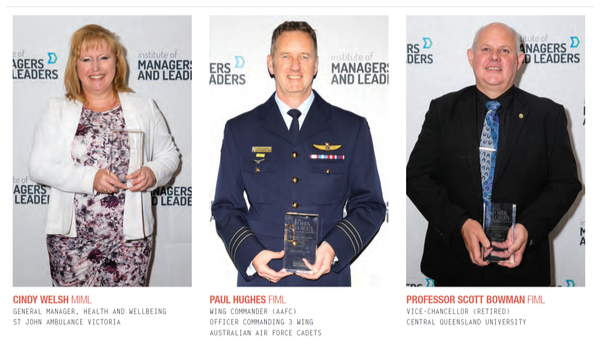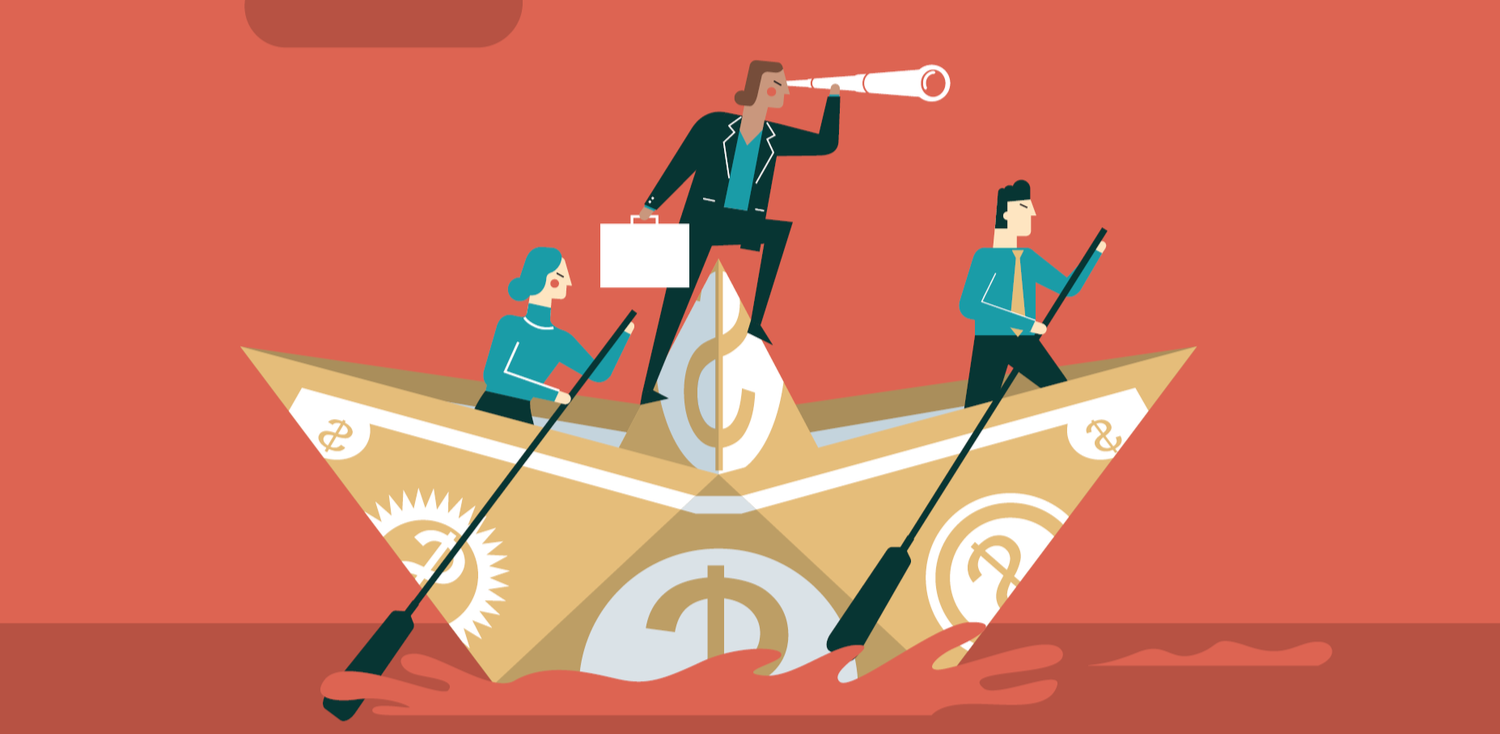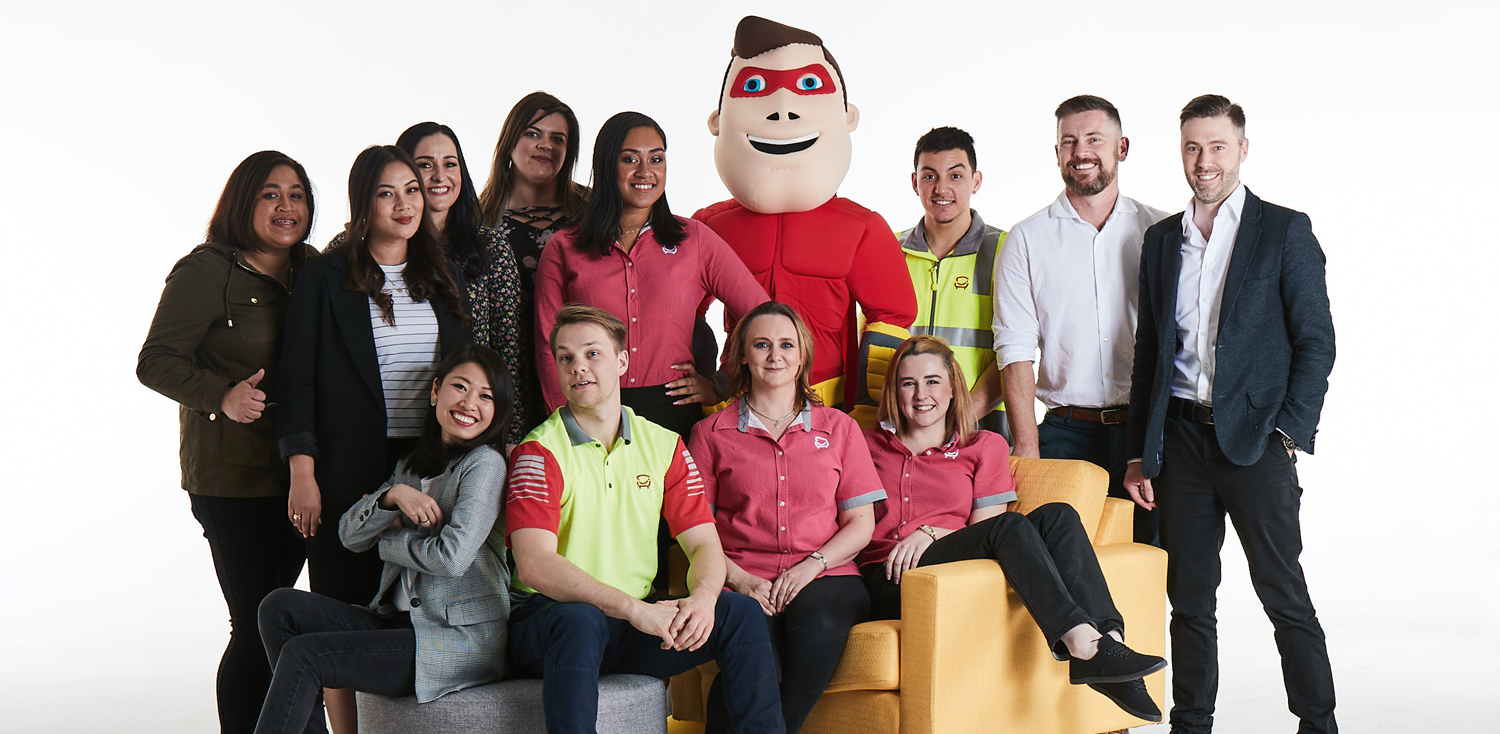Debates about performance reviews take on new intensity during a pandemic and when uncertainty, change, and remote working defines workplaces.
Continue readingGet the balance right: How to avoid under-management
We’ve all heard the adage, ‘people leave bosses, not jobs (or companies)’. Often when we picture a terrible manager, we see a micromanager. But on the other end of the spectrum sits another dangerous practice: under-management.
Continue readingVirtual Development Day: Watch our recorded sessions
Click on the link below to enter your details and get access to the recorded sessions from our first ever IML ANZ Virtual Development Day. You will be redirected to the sessions upon submission.
Steadying the ship: How to lift team performance when morale is low
By Nicola Field
The mark of any great leader is to continue delivering the goods during times of uncertainty, pressure and flux. Leadership Matters caught up with three award-winning IML ANZ Members, who each lifted their teams’ spirits when the going got tough.
FACTORS THAT IMPACT MORALE
Plain sailing never lasts indefinitely, but the factors that can impact team morale are not always clear cut.
Cindy Welsh MIML, General Manager, Health and Wellbeing at St John Ambulance Victoria, says, “Morale can be impacted by things like corporate downsizing or gearing up for a new contract. Or poor morale may simply have been allowed to fester for some time.”
Paul Hughes FIML points to another way that morale can be sapped. Reflecting on his experience with the Australian Air Force Cadets, he explains, “One of the key reasons people join an organisation is because of its vision and its values. Any deviation from those values can impact morale.”
In Hughes’ case, the challenge of declining morale was the result of stagnation. He recalls, “When I came to 3 Wing (NSW and ACT) Australian Air Force Cadets, nothing had really happened for 10 years. People had lost their way and lost their sense of wanting to deliver an experience that our cadets deserved. There had been no growth, no innovation, and no real sense of direction and purpose.”
WATCH FOR WARNING SIGNS
In order to manage flagging morale, it’s necessary to recognise the warning signs.
Welsh explains, “A drop in morale can manifest itself through an increase in sick leave, higher staff turnover or poor performance. Or human resources personnel may be noting an increase in behavioural issues – perhaps more employees treating each other or their managers inappropriately. This can be a sign of underlying frustrations.”
She cautions that leaders and managers may ignore the warning signs because the company or department is performing well. Welsh notes, “This can be a sign of the ‘A-team’ syndrome, where competence and results are high. But they are not sustainable over the long term because people are unhappy.”
Welsh adds that business leaders don’t always pick up on how low morale has sunk. “They may ignore the warnings that their senior people have highlighted, or may base their opinion of staff morale purely on their own interactions within the workforce,” she says. “But not all staff are comfortable giving direct and frank feedback to the CEO or business leaders. It’s important to listen to your managers and, if you’ve been given consistent feedback, it needs to be explored.”
BE THERE. BE IN THE MOMENT
Leadership during challenging periods hinges on being visible. Welsh says there can be a “propensity to retreat from people during times of change”. But she adds, “Transparency with your employees is incredibly powerful. Don’t hide things from your staff.”
Welsh recommends, “Sit in the lunch room with your people and talk to them. Just listen. Hear people out. And do not underestimate the power of peer-to-peer influence. It can see low morale quickly spread throughout an organisation – even across different geographical locations.
“Think about how you can tap into influencers,” advises Welsh. “Use their powers for positivity, encouraging them to champion your change or cultural initiatives.”
Hughes suggests a similar approach, saying, “A lot of building morale as a leader involves being prepared to listen and see what you can do about the situation. Be prepared to take action on what people say – it’s not a matter of paying lip service.” He too recommends identifying ‘champions’, who will actively support your cause. “They will help to dispel the cynics,” says Hughes. “After all, peer pressure is the best pressure of all.”

BEING COMFORTABLE WITH FAILURE
There is no one-size-fits-all solution to lifting team spirit, and the approaches of the different leaders interviewed for this article proves the importance of a tailored strategy.
Professor Scott Bowman FIML, recently retired Vice-Chancellor of Central Queensland University, believes the social element of workplace teams can have a significant impact. He says, “It’s all about pulling together a group of people, who really get along well so that you have a team that celebrates shared successes and commiserates when things don’t go so well.”
He adds, “Leaders can organise events that allow everyone to take time out for reflection sessions. It’s important to look at what went right, and what went wrong. These are not just planning sessions, they are true reflection sessions.”
Professor Bowman notes, “It’s critical for these sessions to have a social element. I quickly worked out for example, that my team were all incredibly bad karaoke singers but they were all prepared to have a go.”
Perhaps surprisingly, Professor Bowman also highlights the importance of making mistakes. He explains, “It’s important for the team to be comfortable with failure. I’m a believer in the 70:30 rule, which says you can expect success 70% of the time and failure 30% of the time. If you have a failure rate below 30% you’re doing something wrong – you’re not trying enough new steps or strategies.”
Of course, the 70% of successes have to compensate for the 30% of failures but Professor Bowman notes, “The key is to pass this appetite for risk-taking down the line through your team. I was always open with my team about the 30% failure rate, and yes, it is unnerving for some people. However, it pays off when you achieve that 70% success rate.”
Welsh holds a similar view. “Foster a ‘no blame’ culture in the workplace,” she advises. “If people think they’ll lose their job because of a mistake, they will never speak up. Employees need to feel psychologically safe and comfortable about admitting to a mistake. Just as importantly, they need to understand what they could have done better and what they have learned from mistakes. Organisations that embrace continuous improvement and adaptive leadership will be the future game changers.”
The ability to accept mistakes extends to leaders also. Hughes notes, “You can collaborate until the cows come home, but ultimately decisions have to be taken. As a leader it’s about not being frightened to make tough decisions.”
Moreover, Hughes says it is important to be able to say, ‘You know what, we didn’t get it right, so what do we need to do now to change this to get the right result?’
HARNESS THE POWER OF PEER REWARDS
For Cindy Welsh, a simple recognition program was instrumental in lifting engagement and workplace morale. She says, “Managers can recognise individual staff, but at St John Ambulance Victoria we introduced the FISH! methodology, which sees peers recognise the efforts of each other.”
As Welsh tells it, prior to the introduction of the FISH! program, St John Ambulance Victoria had peer-to-peer engagement of 52%. Three years later, the program has boosted employee engagement to 95%.
Welsh says, “Thanking and acknowledging peers has now become part of our culture but it has taken time for this behaviour to resonate across the organisation. Increasing peer engagement is a slow burn.”
CREATE A BRAND OR LOGO FOR BONDING
For Paul Hughes, leading a volunteer organisation called for a different response. “We set about identifying how people were really feeling, digging deep into the issues at heart.”
He says, “We found there was no visual identity for the Wing – no branding or logo. So we developed a new logo as a visual identifier, one that best reflected the geographical area we served, which was NSW and the ACT.”
From here, Hughes helped to create a sense of purpose with the mantra ‘Setting the standard, leading the way’.
Hughes was mindful of including all stakeholders wherever possible. “By involving various stakeholders throughout the change process we were able to win over the hearts and minds of our people. This in itself became an integral part of boosting morale.” He adds, “It was about getting everyone on board the journey”.
The reward for Hughes has been a steady increase in the retention rates of cadets and staff over the past four years as well as increasing numbers of people wanting to join Australian Air Force Cadets.
With a keen eye for how your people are feeling, and some tailored strategies, it is possible to steer your team through challenging times.
This article originally appeared in the June 2019 edition of Leadership Matters, IML ANZ’s quarterly magazine.
How analytics tools help boost team and business performance
There is no shortage of data. The way we harvest information is also many and varied. But for leaders who are faced with the daily challenge of making informed decisions, collecting data is no longer enough. What makes it valuable are the insights it provides.
One way to use data to your advantage is when you need to address performance weaknesses – whether that’s within the team or your entire organisation.
Before you dive into the millions of bytes of information available to you, consider the following limitations:
- Effective data analysis requires specialised skills and training. That’s why the role of data scientist is of high demand in today’s workplace.
- While leaders might be highly skilled in business analytics, to boost team and organizational performance, talent analytics mustn’t be overlooked.
So this is where effective analytics tools can help turn mere data into powerful knowledge.
To benefit from a robust analysis of data, ask yourself the following:
What are you doing with the data available to you?
To be clear, launching into a fact-finding mission to improve business results doesn’t always mean putting in place new methods to collect data. What you have at hand is often sufficient. For example, data analytics company Humanyze uses RFID badges (that employees use to enter work premises) and digital data (such as email, meeting and phone call information) to analyse how people work.
What performance challenges are you trying to solve?
The challenge to solve will dictate the type of information you need to analyse. It’s therefore a vital step to clearly identify that challenge. Are you looking to improve team performance? Are you looking to find areas of competitive advantage? Do your managers need to raise their emotional intelligence? All of these will inform where you go to source the data that then needs analysis.
What analytics tools can you use to make decisions?
Once you’ve identified an objective it’s time to look at the most effective analytics model. Of course, this requires more than a simple round-up of huge data sets. A myriad of statistics that reveal submerged patterns is of little benefit if managers can’t effectively use the correlations to enhance business performance.
Creating custom analysis models can be one way to make sense of data. Another way is to use established analytics models targeted at determining how to improve specific areas of performance.
How are you gaining insights and boosting results from your data?
Workplace wellbeing influences personal development
Even Maslow realised that beyond self-actualisation was a higher need. One of self-transcendence or going beyond ourselves. This implies that personal development never truly completes its course until it affects those around us. However, is the reverse also true? What is the effect of a positive workplace on one’s ability to develop themselves?
Employees seek purpose
In designing an AI app for personalised career development, NextPlay.ai noted the desire of the current generation of workers. They don’t just want to turn up to work and get paid. They see their role, organisation and overall career as a source of purpose.
An essential but often overlooked component of workplace wellbeing is a positive work environment — one where employees feel emotionally and mentally safe, and colleagues engage in upbuilding interactions.
These same uplifting surroundings keep younger generations of employees connected with the purpose of their role. If they’re not distracted by stressors within the work environment, they are free to explore the deeper meaning behind their jobs.
Wellbeing equals high engagement
From physical, mental to emotional factors, there’s no denying that workplace wellbeing yields strong business results. Whether that’s through increased productivity, cost savings and lower staff turnover, it benefits organisations.
The most relevant aspect of workplace wellbeing to the development of an individual is that it impacts employee engagement. This engagement is a critical factor for those seeking to develop themselves.
In a study of outstanding performers in various fields (academics, sports, arts), one of the common development elements involved the interaction between personal and environmental factors. An individual developing talent needs not just to have the ability, but also persistence to continue even in the face of failure. Additionally, all of the efforts the individual puts in are for nothing without social and emotional support. That’s where the two factors of a positive environment and engagement meet to motivate individuals to develop their skills, knowledge and talent further.
Highly-engaged employees want development
A survey by the Institute for Corporate Productivity found 54% of participants stated that the quality and availability of development affects their engagement. Therefore, fewer development options, less engagement. However, it is also those employees who have formed a significant connection with their role, organisation and purpose (highly-engaged) who seek further development opportunities.
Delivering a fantastic experience: Learning that gets results
Professional learning doesn’t have to be dull. Rewrite the rules and you’ll have happy, engaged team members that stick around, says learning and development specialist Samantha Mueller.
By Emma Mulholland
Anyone who has worked in retail knows the biggest challenge is attracting and retaining talent. That’s where Samantha Mueller, Head of Learning and Development at Fantastic Furniture comes in. Her secret? Delivering a fantastic experience from day one onwards. If you can delight team members from the start you’ll have skilled, engaged team members that want to stay and progress in the business. Since she joined the well-known retailer Fantastic Furniture in 2016, Mueller has focused on delivering learning solutions that are aligned to the business objectives and mission to ‘Make Life Fantastic’.
“I love the brand – it’s a fun, vibrant and dynamic place to be,” she says of the company, which has come a long way in its 30 years. What started out as a single stall selling plastic garden furniture at Sydney’s Parklea Markets now comprises 75 stores, two Australian manufacturing factories and more than 1,200 employees.
A brand refresh in March has played up the company’s fun, cheeky approach to the market and has brought significant changes, including plans to grow the business and a refresh of its employer brand and values. But what could have been a challenging time for the team and business has instead been an opportunity to engage and innovate? Here, the Head of Fantastic Furniture’s Learning and Development team tells Leadership Matters how they pulled it off.
Collaborative approach
“I’m collaborative in my approach — I look for ways to involve others and leverage the diverse experience of our team,” says Mueller, who started at the Sydney office after stints at Dick Smith Electronics and international beverage behemoth Lion. “My background is in leading operational
teams but over time I’ve morphed into L&D roles. I’ve always been passionate about L&D because of the positive impact it can give individuals and the business. I’ve seen the impact when L&D is not a priority – it has a negative impact on engagement, turnover and growth.”
Investment in roles like Mueller’s are becoming increasingly common in the retail sector — a shift she puts down to the modern workplace, where employees are after more than just a pay cheque. “Just like customers, who want more value and a better experience from retailers, our people want more from us too: more input, more opportunities and a greater employee experience,” she says. “Businesses that aren’t focused on that are the ones that get left behind.” But strong engagement brings its own challenges.
In the case of Fantastic Furniture, where team members are encouraged to take ownership of the brand, any organisational change involves collaboration with the team.
“The brand refresh was not about changing direction but showcasing who we are and what we stand for,” says Mueller. “Our teams are extremely passionate about the business, so the change management approach was critical. We took every opportunity to seek input on decisions that impact the team. For example our marketing team flew retail team members to Sydney so they could be part of designing their new uniforms. Taking this collaborative approach enabled the team to prepare for change and contribute to outcomes that impact them.”
Learning that benefits team member and the business
Before embarking on a new project, Mueller asks herself one question: how will this make life fantastic for the team and business? “With the rebrand, we reviewed our L&D programs to align core programs to business objectives. In the past two years we’ve rebuilt our induction and foundation programs with an emphasis on ensuring our team has a fantastic experience through every touch point.
“We launched our accredited training through ‘Fantastic eCademy’, enabling team members to complete their Certificate III in Retail and progress their careers within our business. We’ve also enhanced our online platform ‘Learning Lounge’ to improve how we communicate and deliver learning on a national scale. We’re focused on delivering solutions that benefit both team members and the business,” says Mueller.
Mueller’s team recently revamped the online (World Manager) platform which is accessible to team members via desktop and a smartphone app. The online platform is used to deliver learning and communications, as well as manage a peer recognition program. They’ve also created social forums for team members to share updates and provide feedback. “We’re leveraging technology to enhance the learning experience,” says Mueller. “For me it’s about creating something that our team want to participate in and be part of.”
Experience is everything
When in doubt, Mueller asks herself: “How will this create a fantastic experience?” For example, during a review of Fantastic Furniture’s customer service training, she let the retail teams take the reins, asking them: “How can we deliver a great experience for customers?” In the end, they came up with a ‘Fantastic Customer Experience Program’ that involves a unique six-step approach.
To launch the program, the regional area leaders came up with a competition, ‘Share your Fantastic Customer Experiences’. Team members were encouraged to post on an online forum about the fantastic experiences they were delivering to their customers. “Team members immediately began posting videos, sharing success stories, singing and acting out the Fantastic six process for engaging customers,” says Mueller. “The results were amazing. We got the highest usage and click throughs we’ve ever had on the forums and two months following the launch, Fantastic Furniture recorded its highest-ever net promoter score (NPS). Customers are having a fantastic experience in stores and NPS results are continuing to increase”. The benefits are ongoing. Engagement and posts on the forums have continued and the social sharing aspect has proven to enhance the teams learning experience.
Fantastic Beginnings
Mueller says that a fantastic onboarding and induction is one that is structured, personalised and well supported: “First impressions count and we’ve found that our ‘Fantastic Beginnings’ program helps new starters get up and running quickly because they know what to expect and what path they’ll follow in their first three months.”
On day one, new starters receive a Fantastic Welcome Pack, customised by their leader, which includes a guide to help them navigate their first three months. The leader also has a guide to support them with the onboarding and induction process.
“I’m a big believer in a blended approach so we’ve incorporated online learning with on-the-job activities and check-ins along the way,” says Mueller. “We utilise our platform to capture how people are tracking.” From there, the team member and leader have regular check-ins, so they have a chance to connect, share feedback and set goals.
Pathways to progress
When Mueller surveyed team members to find out what they wanted from L&D, one thing stood out: opportunities to learn and progress. And so the Fantastic eCademy was born: a nationally accredited, nine-month program. Over the past 12 months, 100 team members have completed the program, attaining a Certificate III in Retail. “What’s great is that our leaders, including CEO Debra Singh, get involved in the graduations and make a big effort to recognise the achievements of our team,” says Mueller. “Demand is such that over the next year we will look at adding higher qualifications to the mix, including Certificate IV or Diploma level qualifications.”
A clear organisational pathway makes it easy for employees to know what skills and behaviours will assist them in progressing to their next role. Recently Mueller, launched the ‘Fantastic Leadership Pathway’. The pathway has four defined levels of leadership – from The Ace (high potential team members and first-time leaders) through to The Visionary (those at general manager and executive level) – each level is identified by a particular set of skills and behaviours.
Team members are encouraged to take a proactive approach with their development and are supported with an online toolkit. The toolkit contains training resources and links to external sources, including leadership books such as Georgia Murch’s Fixing Feedback. “Two months after the launch we had more than 500 downloads, which is significant because it shows that both leaders and team members are proactively using it,” says Mueller.
“I’ve just launched ‘ACE Leadership’, our first national leadership program aligned to the leadership pathway. It’s a six-month program designed to support new leaders to raise their profile and take ownership of their personal brand. We’ve had more than 130 ACE leaders enrol in the program. I’m excited to support their journey and progression in our business.”
Measuring success
Mueller’s team will evaluate the leadership program over the coming year, assessing the participants’ career progression and the take-up among the company’s high-potential team members. Every project her team launches is evaluated to assess if intended outcomes have been met. Mueller’s team is fun and down to earth but also commercially focused. “It’s important to be able to demonstrate the value L&D adds to the business,” she says.
“We always look at the return on engagement and investment. For example, with our Customer Experience Program, we looked at participation and leader feedback, as well as our NPS, sales and upsells. We compared results before and after the program.”
Since Mueller joined Fantastic Furniture, employee retention has increased 14 per cent. When asked what makes her such an engaged member of the Fantastic Furniture team, Mueller doesn’t hesitate: “What really stands out for me is the genuine care, commitment and investment in people. I’m supported and empowered to deliver on our mission to Make Life Fantastic”.
How to facilitate effective innovation days
In the fierce contemporary business environment, we always hear people ramble on about the importance of innovation. So much so, more organisations are starting to implement workforce innovation days.
An innovation day involves the workforce splitting into small teams to try and solve a problem relevant to the business. For companies such as: Suncorp, Microsoft and Google, these innovation days have been pivotal for building high performance teams.
For those employees that participate in innovation days, it means much more than just working in a team to design a solution. Instead, they are working in a team to develop strategic ideas that the company could actually implement. This sets the scene for a highly motivated team as there is a strong sense of empowerment and purpose amongst members.
So, how can your organisation implement innovation days to maximise team performance? This article will take a look at the three key steps to facilitating an effective innovation day.
Step 1: Ideate
The ideate stage introduces teams to the issue and provides context around the issue so that ideas can be brainstormed. To promote effectiveness, here are a few sneaky hints!
Firstly, it is important to gain commitment by pitching why the business problem is a pressing issue and how it could potentially harm the future success of the organisation. By not answering the ‘why,’ employees are likely to care less about the issue. As such, passion and creativity may be lacking whilst designing a potential solution.
Secondly, to promote more active involvement by members at this stage, it is recommended that team formations are no larger than five.
Finally, there is a tendency for teams to rush this stage of problem solving and start going into detail about one specific idea before considering all available options. To reduce the risk of this, it is recommended that facilitators provide a time guide for teams.
Step 2: Prototype
This step involves teams taking their core ideas further. To promote highly effective prototypes at this stage, it is recommended that teams get the opportunity to discuss their ideas with coaches and mentors in the business. This will assist in highlighting any idea weaknesses and capitalising on any key strengths.
Step 3: Validate
The final step encourages teams to present their solution to their colleagues and other key stakeholders. This particular step is essential for two reasons. Firstly, it provides another opportunity for feedback so that elements of the idea can be strengthened. Secondly, even if the idea isn’t implemented, it provides teams with a sense of achievement for participating in the innovation day and producing a final product.
Are You Guilty of ‘Scraping the Surface’ When Solving Problems?
We hate to admit it, but many of us are good at just scraping the surface when solving problems. Some like to call this approach the ‘hide it in the closet technique.’ However, in today’s competitive business environment, problem scraping and closet filling isn’t going to get you or your team very far.
For those of you that are guilty of this, the Fishbone Diagram is a great method for delving a little deeper. This model facilitates a comprehensive problem-solving approach by encouraging consideration of all possible causes when designing a solution. This model also describes the relationships between different factors that cause a particular problem. Below we will take a look at the four steps required to effectively use the Fishbone Diagram as a problem-solving technique.
Step 1. Decide on a problem that you want to be solved
When deciding on the problem, it is important to be as specific as possible as more specific problem definitions will promote tailored solutions. It is also important to ensure that the problem isn’t defined in terms of a solution (e.g. we need more of something). By defining the problem in terms of a solution, the chances of identifying other underlying causes and deriving creative solutions are reduced.
Step 2. Agree on the major categories of the problem
The major categories of the problem are the labels of the major branches on the diagram. It is important to tailor these categories to the structure and characteristics of your organisational environment so that the factors surrounding the problem can be appropriately analyzed. These categories will vary across organisations and teams; however, three of the most common Fishbone Diagram categorizations are:
- Surroundings, suppliers, skills and systems
- Price, people, place/plant, procedures, promotion, processors, product and policies
- Man, materials, machines, methods, environment and measurements
Step 3. Brainstorm all the possible causes of the problem under each category
To promote the success of this step, it is recommended that a group of people are involved as this will encourage a more diverse range of ideas. Every cause identified during this step should be added to one or more of the relevant categories in the diagram. During the cause identification phase, it is also common to identify further problems that have additional causes. When this occurs, they can be added as extra sub-branches on the Fishbone Diagram.
Step 4. Analyze the diagram
This step is the most significant part of the Fishbone Diagram exercise. This step is important for identifying causes that may require further investigation, causes that are repeated across the various categories as well as causes that may be easy to correct.
Overall, the Fishbone Diagram could be a powerful tool for you and your team when solving organisational problems. By encouraging the implementation of this tool, it could assist in fostering a culture that is dedicated to continuous improvement and critical problem-solving.











